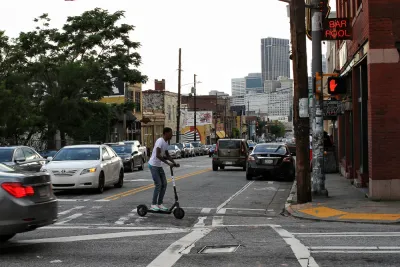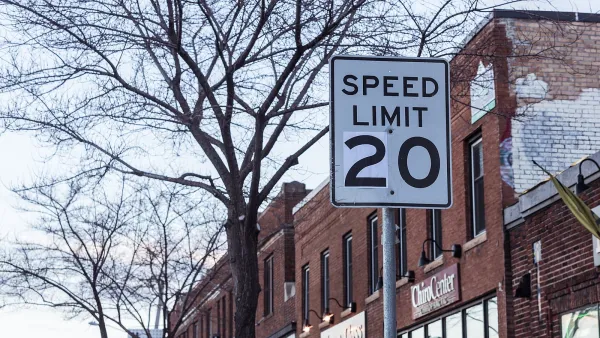Vision Zero arrives in one of the country's most car-centric big cities.

"Atlanta’s local roads now have a default speed limit of 25 miles per hour after the City Council formally adopted the Vision Zero plan on April 20, which focuses on eliminating traffic deaths and reducing crashes and serious injuries," according to an article published by Atlanta Intown.
"The default speed limit applies to any city road without another speed limit expressly posted," according to the article.
The new speed limits are the key component of a Vision Zero plan now approved by the Atlanta City Council. A separate article by David Ederer calls on the city to go beyond the posted speed limits to improve traffic safety in the city, tackling the tougher problem of the design and engineering decisions that enable drivers to choose unsafe speeds in the first place.
Atlanta, while late to the Vision Zero movement, could lead by explicitly designating people walking or rolling as their design user. For too long, Atlanta has prioritized convenience over safety in its transportation system. By beginning with the principle that it will design a transportation system with the most vulnerable as its key users, Atlanta will start on a path to an effective Vision Zero program.
Atlanta Journal-Constitution columnist Bill Torpy is the sole voice from that publication to discuss the new speed limits, in case anyone wants to read barely concealed, car-centric skepticism about the decision.
FULL STORY: Default speed limit lowered to 25 mph on Atlanta roads as part of Vision Zero plan

National Parks Layoffs Will Cause Communities to Lose Billions
Thousands of essential park workers were laid off this week, just before the busy spring break season.

Retro-silient?: America’s First “Eco-burb,” The Woodlands Turns 50
A master-planned community north of Houston offers lessons on green infrastructure and resilient design, but falls short of its founder’s lofty affordability and walkability goals.

Delivering for America Plan Will Downgrade Mail Service in at Least 49.5 Percent of Zip Codes
Republican and Democrat lawmakers criticize the plan for its disproportionate negative impact on rural communities.

Test News Post 1
This is a summary

Test News Headline 46
Test for the image on the front page.

Balancing Bombs and Butterflies: How the National Guard Protects a Rare Species
The National Guard at Fort Indiantown Gap uses GIS technology and land management strategies to balance military training with conservation efforts, ensuring the survival of the rare eastern regal fritillary butterfly.
Urban Design for Planners 1: Software Tools
This six-course series explores essential urban design concepts using open source software and equips planners with the tools they need to participate fully in the urban design process.
Planning for Universal Design
Learn the tools for implementing Universal Design in planning regulations.
EMC Planning Group, Inc.
Planetizen
Planetizen
Mpact (formerly Rail~Volution)
Great Falls Development Authority, Inc.
HUDs Office of Policy Development and Research
NYU Wagner Graduate School of Public Service





























